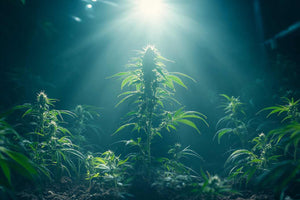
Light is a crucial factor for the health and growth of plants. However, inside our homes, particularly in northern regions, the lack of adequate light is a significant issue for indoor plants. Unlike in their natural environment, these plants often face the challenge of insufficient lighting.
Even with well-placed windows, the brightness available to most indoor plants is still far from sufficient. It’s essential to recognize that while our homes may seem bright, the contrast in light levels compared to the outdoors is considerable.
For instance, on a cloudy day, outdoor light levels can reach around 15,000 lux, whereas indoor lighting in what we consider a bright room may only be around 500 lux. This stark difference means that even rainforest plants, which thrive in the shade under tall trees, receive far more light in their natural habitat than they would indoors.
Fortunately, there is no risk of exposing your indoor plants to too much light during the winter. In fact, to keep them thriving and avoid a state of semi-dormancy from September to March, supplemental artificial lighting is often necessary!
Light, plant health and growth
Light is absorbed by the pigments in the leaves, and plant growth is regulated by a hormone called auxin. The intensity and quality of light play a crucial role in the development and expansion of young cells in stems, leaves, and flowers. Outdoors, light is evenly distributed from all directions, providing a balanced environment for growth. However, indoors, particularly when a plant is placed near a window, light typically comes from only one direction.
This uneven light distribution often results in uneven growth, which is why it's advisable to rotate each plant a quarter turn every week to promote more balanced development.
brightness
The intensity of light a plant receives is measured in lux. While there isn't a one-size-fits-all ideal light level for every plant, the optimal luminosity varies depending on the specific needs of each plant species. To determine the right amount of light, it's helpful to consider the plant's natural habitat.
For instance, plants native to tropical rainforests typically require far less light compared to cacti, which thrive in the intense sunlight of the desert. By understanding a plant's geographic origin, we can make informed guesses about its light requirements.
Light quality
The best light must still be sunlight because it can naturally meet all the requirements of plants, but not all types of artificial light. Human-perceived energy particles are called photons, which are between 400 and 750, while plants are between 445 and 750. However, for example, the energy particles emitted by incandescent lamps are between 650 and 700, which is far from meeting human needs. All plants. The best lighting system will be discussed later in this article.
Natural lighting
Plants will talk to you when the light is low
If the light intensity is insufficient, photosynthesis and growth will be reduced, we will see: pale and smaller leaves, discolored spots, brown or dry yellow plants, weak stems, large internode distance, insect infection, if we water too much, The root will rot, stop flowering, etc.
Duration of artificial lighting
According to the brightness requirements of plants, the lighting time of artificial lamps will be different. For flowers to bloom, such as African violets, they must be lit for 14 to 16 hours a day. Don't shine for 24 hours, because plants will naturally write down the night demand of genes like us. It is best to use a timer because it will be simpler.
Maintenance of indoor plants under artificial lighting
Plants that are used to natural sunlight need time to adjust to artificial lighting, a process that can take anywhere from a few weeks to several months. During the first few weeks after being moved indoors in the fall, there's no need to worry too much about this adaptation period. It's also important to remember that not all plants come from the same environment.
For example, tropical plants experience relatively consistent light levels year-round. However, this isn't the case for other plants, especially those from regions with distinct winter seasons, which require a period of rest. Depending on the plant species, it may be beneficial to allow them to enter a semi-dormant state during this time, which involves reducing their light exposure, withholding fertilizer, and limiting watering.
In conclusion
If our budget allows it, it is clear that we must prefer the LED lamp system, especially because these lamps will not heat and consume very little energy, so it is more economical.

